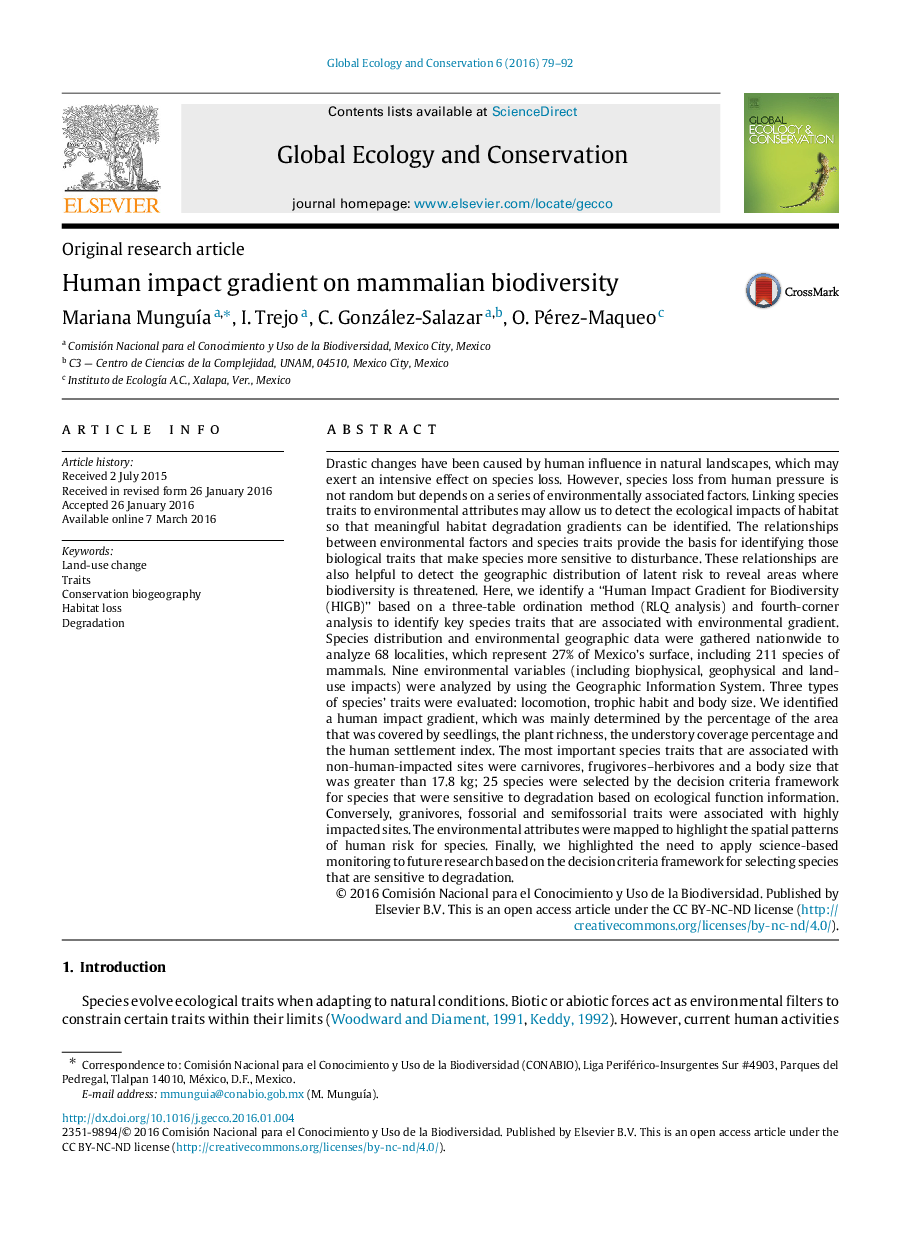| کد مقاله | کد نشریه | سال انتشار | مقاله انگلیسی | نسخه تمام متن |
|---|---|---|---|---|
| 4379637 | 1617661 | 2016 | 14 صفحه PDF | دانلود رایگان |
Drastic changes have been caused by human influence in natural landscapes, which may exert an intensive effect on species loss. However, species loss from human pressure is not random but depends on a series of environmentally associated factors. Linking species traits to environmental attributes may allow us to detect the ecological impacts of habitat so that meaningful habitat degradation gradients can be identified. The relationships between environmental factors and species traits provide the basis for identifying those biological traits that make species more sensitive to disturbance. These relationships are also helpful to detect the geographic distribution of latent risk to reveal areas where biodiversity is threatened. Here, we identify a “Human Impact Gradient for Biodiversity (HIGB)” based on a three-table ordination method (RLQ analysis) and fourth-corner analysis to identify key species traits that are associated with environmental gradient. Species distribution and environmental geographic data were gathered nationwide to analyze 68 localities, which represent 27% of Mexico’s surface, including 211 species of mammals. Nine environmental variables (including biophysical, geophysical and land-use impacts) were analyzed by using the Geographic Information System. Three types of species’ traits were evaluated: locomotion, trophic habit and body size. We identified a human impact gradient, which was mainly determined by the percentage of the area that was covered by seedlings, the plant richness, the understory coverage percentage and the human settlement index. The most important species traits that are associated with non-human-impacted sites were carnivores, frugivores–herbivores and a body size that was greater than 17.8 kg; 25 species were selected by the decision criteria framework for species that were sensitive to degradation based on ecological function information. Conversely, granivores, fossorial and semifossorial traits were associated with highly impacted sites. The environmental attributes were mapped to highlight the spatial patterns of human risk for species. Finally, we highlighted the need to apply science-based monitoring to future research based on the decision criteria framework for selecting species that are sensitive to degradation.
Journal: Global Ecology and Conservation - Volume 6, April 2016, Pages 79–92
